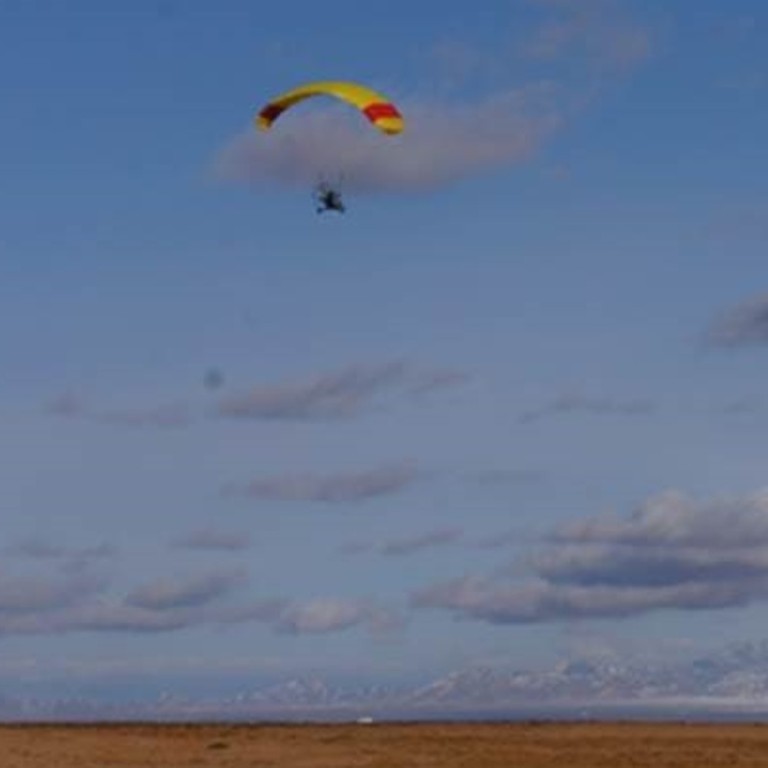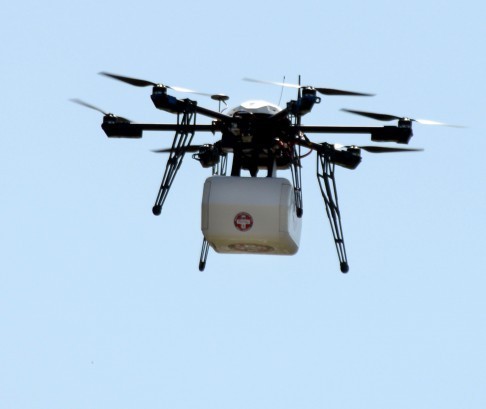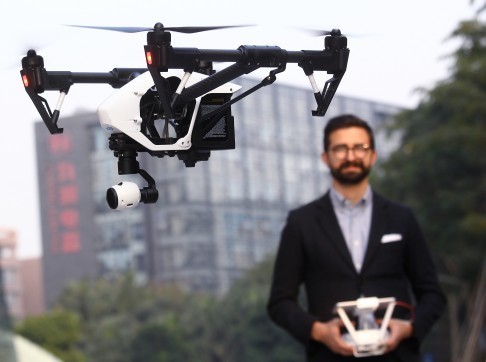
‘Game changer for future battlefields’: Chinese military praises stealth drones that use parachutes after tests in Tibet
Chinese researchers have completed the final field tests of a “paragliding drone” in the western province of Tibet, a milestone seen as a prelude to China soon embarking on its first robotic air cargo fleet for military operations or disaster relief.
Instead of using fixed wings or rotors like conventional drones, the newly tested drones rely on a powered parachute for lift.
China is a world leader in producing civilian drones, with Shenzhen-based start-up DJI now controlling over 70 per cent of the global market from its base in southern China.
However it’s military is still playing catch-up with other world powers in the development of cutting-edge drone technology, experts say.
READ MORE: China rules on drones under way

The latest field tests were conducted by researchers at the Chinese Academy of Sciences’ Shenyang Institute of Automation, which runs under the supervision of China North Industries Group Corp., the largest arms supplier in the country, according to the institute’s website earlier this week.
READ MORE: Most popular and innovative Chinese drone companies
The results showed that the unmanned parachutes could be deployed in harsh environments such as high-altitude areas with thin air, the statement said.
The unique design of these drones offers several tactical advantages, and they have met with interest from a number of militaries around the world.
They can “solve the difficult challenge of large-area surveillance and long-distance delivery” for natural disasters such as earthquakes and military operations, according to the statement.

Chinese military representatives awarded “high praise” to the drones and anticipated their future deployment in delivering supplies, or for special field surveillance missions, it added.
Due to the structural simplicity of the devices and chutes, a large cargo fleet could be put together quickly at relatively low cost.
In the recent tests, they were flown at low speeds and at a low altitude. The use of sensors and artificial intelligence improved their performance, enabling a whole fleet to reach its targeted destination and drop goods off automatically or via remote control, the report said.
China is currently engaged in a number of territorial disputes with its Asian neighbours in outlying islands in the South China Sea - areas where a robotic air cargo fleet could prove useful.
WATCH: World’ s top 10 drones
Pundits also see applications for the drones in hard-to-reach rural areas such as those hit by temblors in Sichuan or Yunnan provinces.
The cargo delivery capability of the Chinese military has fallen behind that of the United States and Russia, partly because of a shortage of large transport planes and heavy-lifting helicopters, according to reports.
Moreover, reports from the Pentagon in May claimed that China’s military plans to produce 42,000 land- and sea -based unmanned weapons and sensor platforms as part of its ongoing military buildup.
Talking about the latest tests on smaller, parachute-operated drones, researchers said the technology opened up a whole new set of challenges.
One of the problems encountered was that parachutes are harder to control than fixed wings, especially in windy areas.
The algorithms used to plan routes, programme the devices to run on autopilot, or control them aerodynamically are also very different from those required for ordinary drones, experts say.
Early prototypes have served as teasers at international air shows, but China has for the most part kept the development and progress of its new stealth drones largely under wraps.
READ MORE: China to test new smog-busting drone to help clear polluted skies
The drone model tested in Tibet was found to fly reliably at 4,000 metres above sea level with a maximum cargo weight of 200 kilograms. Its propelling motor ran for four hours, while optical and infrared sensors helped it self-navigate and search for targets, the report said.
As big a step forward as this may be, it is dwarfed by other projects being undertaken in the United States.
One new system that is being designed by defence contractor Raytheon for the US Defense Advanced Research Projects Agency (Darpa) could see similar drones being deployed from container ships.
They would also have parachutes attached and could be assembled quickly and sent to war -or disaster- zones where it is unsafe for choppers or manned aircraft to venture, according to Darpa.
The agency has commissioned a number of private companies to develop large drones like these, it said, adding that they could change the way warfare is conducted in future battlefields.
Some can fly for over 24 hours with cargo loads in excess of one tonne - five times the maximum payload of their Chinese counterparts - according to reports.

